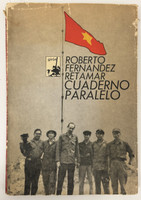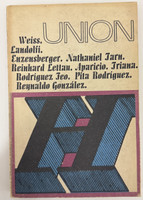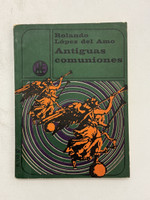- Travel
-
Exhibits
- La Portada Cubana
- Immortal Cuba: Artists Take on Their Heroes
- Seattle Poster Exhibit
- Sandra Dooley & Alejandrina Cué
- The Art of Wayacón
- Cuban Folk Art
- Cuba In Black And White
- 25 Years of Cuban Art Space
- Summer Folk Art Expo
- ¡SPRING AWAKENING FROM CUBA!
- Celebrating The Art Of Cuban Women
- Celebrating Paper, Affordable Art from Cuba
- Art of the Revolution
- Outsider Art
- Lost and Found
- En la lucha: Celebrating Cuban Women and Their Art
- Cuban Art Stash
- 100 Fires: 5 Cienfuegos Artists' Work on Paper
- Waya + Monte! Magic Realism in Cienfuegos
- Viva Cuba Viva! Poster Show
- Cultivando Sueños
- Black Lives Matter in Cuba Jan 9-March 27
- Leandro Soto: Crónicas visuales
- Cuban Canvas
-
Archive
- Global Reflection 2018: Spirit and Community
- Exhibit in the cloud: Contemporary Works on Paper
- MADE IN CUBA! MINNEAPOLIS EXHIBIT
- Cuban Posters and Photography from CCS collection
- AUTUMN SALE! Sept/Oct 2017
- SPRING ARTS AND CRAFT SALE
- Vuelo Directo/Non Stop: Alberto & Alejandro Lescay
- The Many Faces of Fidel
- Somos
- Made in Cuba!
- The US empire in Cuban graphics
- Made in Cuba/Seattle exhibit
- Entre Nos
- Looking Back
- Cuban Art Space
- Membership/Donate
- About Us
- Cuba News
-
Voy a Hablar de la Dicha (I'm Going to Speak of Happiness) showcases the work of Luis Marré, a poet deeply rooted in Cuba's rural working-class experience. Published in the accessible Bolsililibros Unión pocket book series, this collection made poetry available to ordinary Cubans in an affordable, portable format that could be carried easily and read anywhere—embodying the revolution's commitment to democratizing culture.
The cover design by Eduardo Abela Alonso features a whimsical, hand-drawn aesthetic with playful typography rendered in cream against deep black. The letterforms appear spontaneous and child-like, with irregular shapes scattered across the composition spelling out "Luis Marré" and "Voy a hablar de la dicha." A stylized rooster or bird figure occupies the lower portion, drawn with gestural white brushstrokes that evoke both folk art and modernist spontaneity. Small dots and organic shapes float throughout the composition, creating a sense of joy and lightness that mirrors the book's title theme of happiness.
Luis Marré (born August 22, 1929, in Cojímar, Guanabacoa) represents the emergence of working-class voices in revolutionary Cuban poetry. A poet, journalist, and author of radical pamphlets, Marré worked as a gardener, textile worker, and accountant in the Agricultural Development Zone LV-17 in the Ciénaga de Zapata before serving as Economic Chief of the metalworking factory "Reynaldo Castro" until 1965. He later joined the Cuban Institute of Radio (ICR) and became a member of the Communist Party in 1964, participating as a combatant in the cleanup of the Escambray and at Playa Girón (Bay of Pigs).
As a poet, Marré gained recognition through Orígenes and Ciclón magazines, and contributed to important revolutionary publications including Lunes de Revolución, Unión, and Casa de las Américas. His poetry collections include Los ojos en el fresco (Havana, 1963), Canciones (Havana, 1965), and Habaneras y otras letras (Havana, 1970). At the time of this publication, he served as editing secretary for UNEAC's La Gaceta de Cuba. The book is dedicated "Para María y Jorge Luis, razón de dicha y esperanza" (For María and Jorge Luis, reason for happiness and hope), grounding the collection's themes in personal relationships and family.
-
-
Discover More at the Center for Cuban Studies







